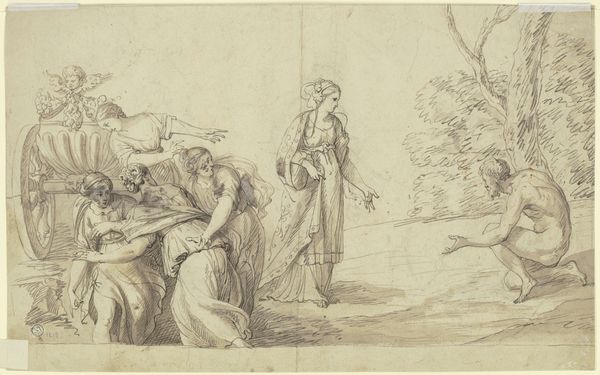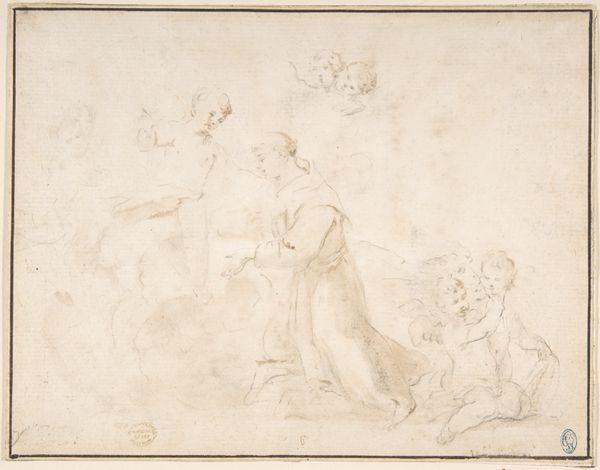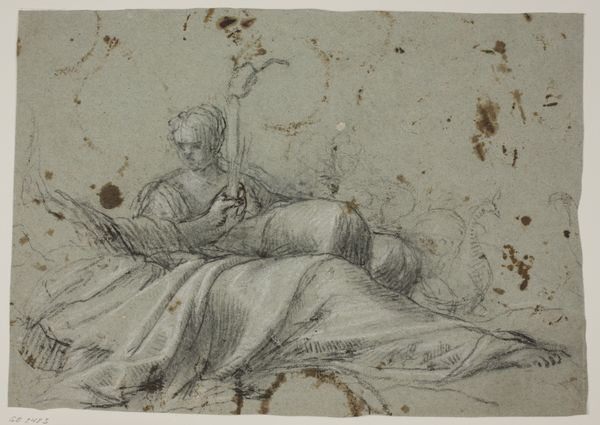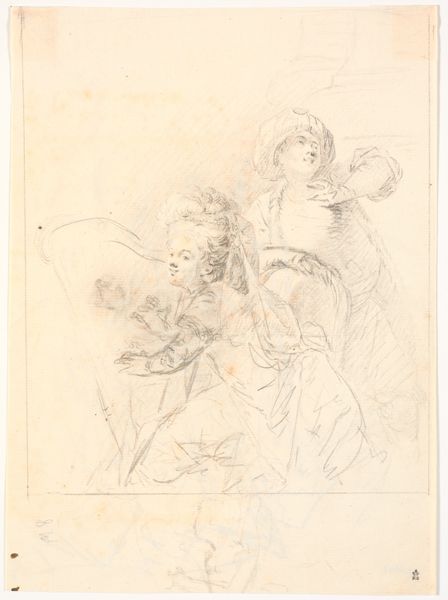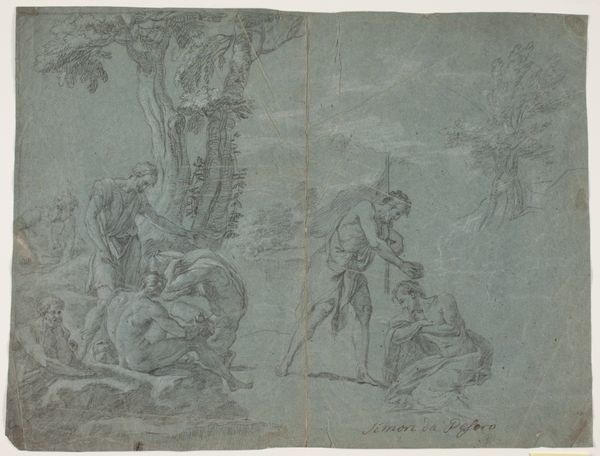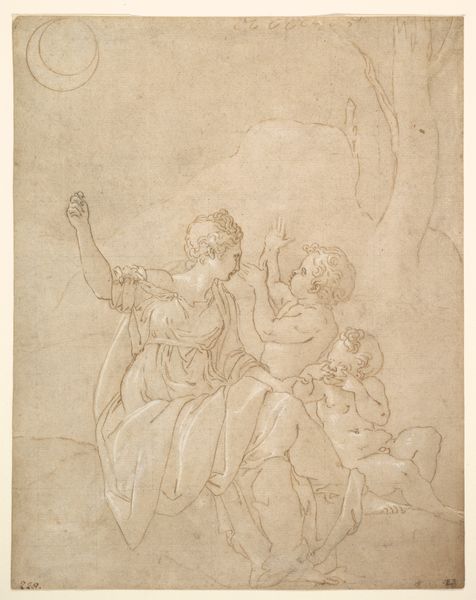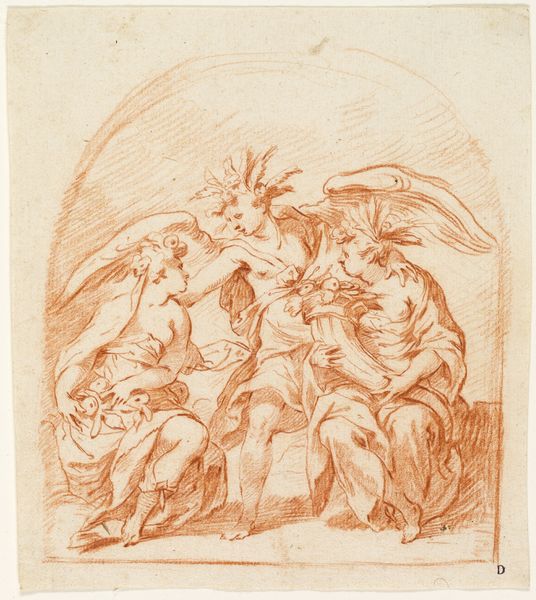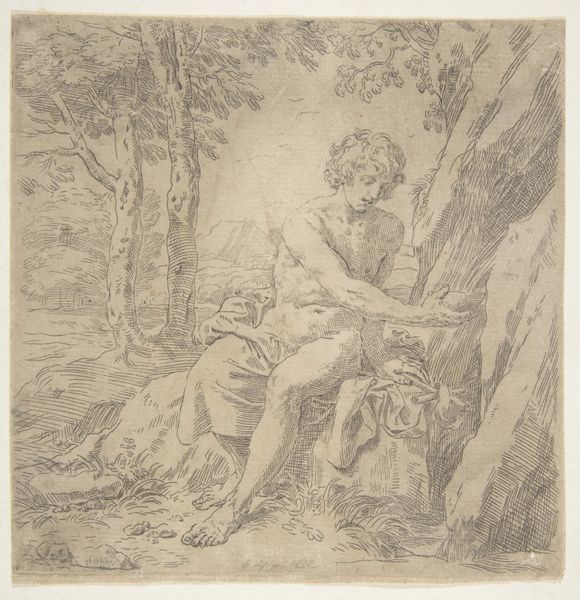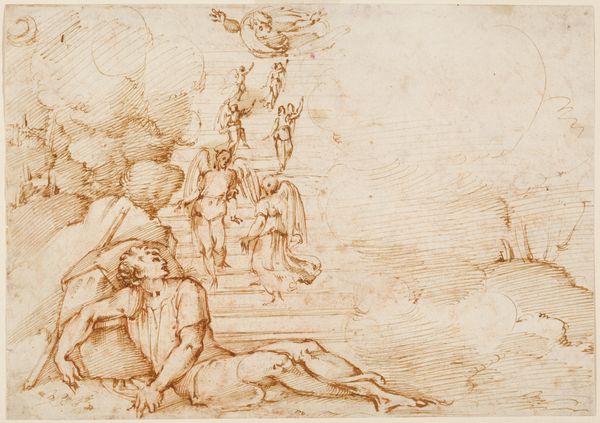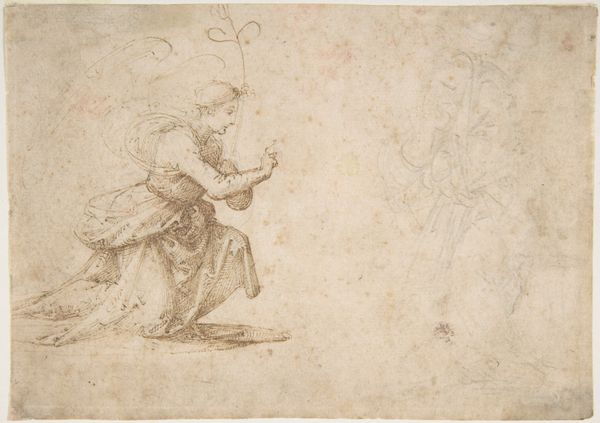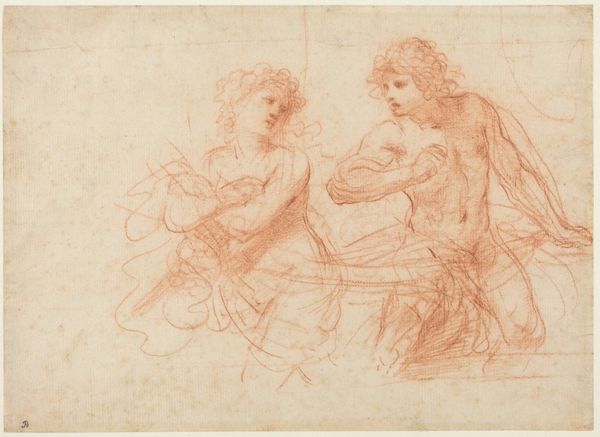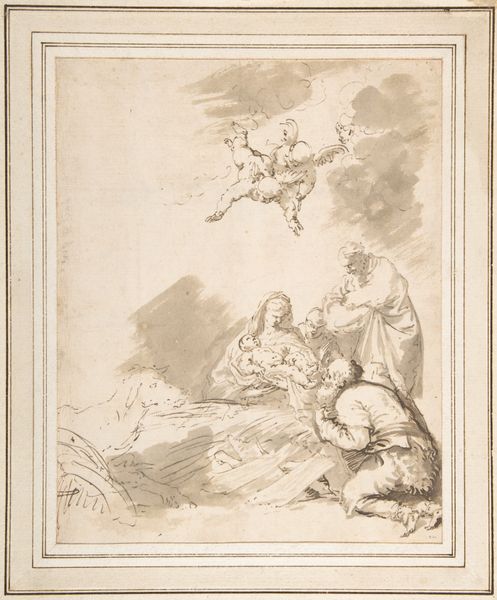
Tondo met Heilige Familie; daarnaast een studie van een liggende vrouw 1800 - 1900
0:00
0:00
drawing, paper, pencil
#
portrait
#
drawing
#
pencil sketch
#
paper
#
11_renaissance
#
pencil
#
italian-renaissance
#
nude
Dimensions: height 258 mm, width 433 mm
Copyright: Rijks Museum: Open Domain
Editor: This pencil drawing, “Tondo met Heilige Familie; daarnaast een studie van een liggende vrouw," dates from sometime in the 19th century, but the scene and the artistic style reminds me so much of the Italian Renaissance! What stands out to me is the contrast between the detailed "tondo," a circular composition depicting the Holy Family, and the more free-flowing sketch of a reclining nude on the left. How do you interpret this work? Curator: Well, you're right to see Renaissance influences. We need to consider what the revival of Renaissance styles and themes signified in the 19th century. The resurgence often aligned with a desire for stability and idealized beauty during periods of social change, industrialization and revolution, a time of immense socio-political upheaval. What do you think the act of drawing religious and nude figures signals within the context of that era? Editor: Maybe the artist sought refuge from industrial life and social conflicts through more ‘classical’ values? Curator: Exactly. Furthermore, drawings like this often served a didactic function within academic settings. These figures, drawn from historical, mythological, or religious contexts, were not simply aesthetic exercises. Instead, consider how representing the nude figure within an idealizing artistic practice reinforced cultural norms concerning gender, beauty standards, and even social morality. Can you see any possible implications of that? Editor: So it's not *just* practice but part of a bigger cultural discussion about how society sees beauty and the sacred! I never would have picked that up. Curator: It's all part of seeing how the art world influences—and is influenced by—the world around it. Studying works such as this challenges the assumption that art exists outside broader power dynamics, and the reproduction of "traditional" values served specific socio-political ends. I find it exciting to understand a simple pencil sketch as a reflection of the wider historical, social, and political forces during a period of transition and transformation.
Comments
No comments
Be the first to comment and join the conversation on the ultimate creative platform.
